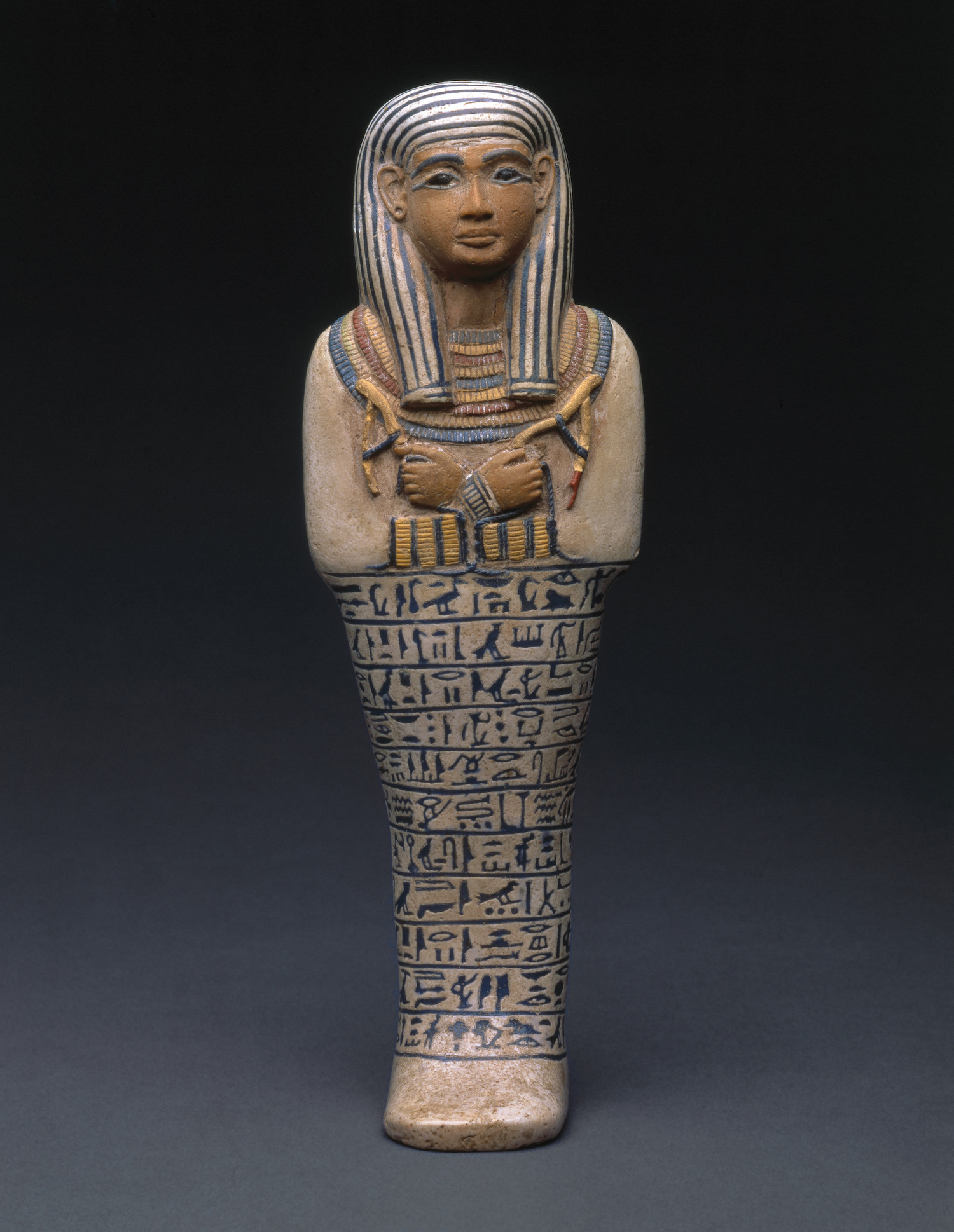
How an Ancient Egyptian Blue Has Survived for Thousands of Years
This brilliant shade of blue unlocks a history of Egyptian glazing technique.
Asked and answered: Frequent Art Questions is a monthly series that addresses frequently asked questions from Brooklyn Museum visitors about art and museum practices.
The brilliant blue glaze that you see on this object was very popular in ancient Egypt, and it was probably discovered by accident. There are objects this color throughout our galleries of ancient Egyptian art and at other museums around the world. The color forms when particles of copper oxide fuse with the compounds of the glaze under the high heat of the kiln.
Visitors have asked us: Where did this shade come from? How did the ancient Egyptians figure this out, and how has the color survived for thousands of years?
Let’s break it down.
The earliest archaeological evidence of the blue glaze dates to the Chalcolithic or Copper Age; scholars have found that it was probably discovered while processing the metal. The glaze is made from the combination of silica, an alkali, and pigment. Silica is abundant in sand. Ashes created by burning plants are rich in alkali. The pigment here is copper oxide, which forms when copper metal is exposed to oxygen; the green layer on the Statue of Liberty is copper oxide, for example. All these materials would have been present when the ancient Egyptians were smelting and melting copper for use in artwork, tools, and weapons. The fire must have been hot enough for the materials to form chemical bonds, which created the hard, smooth glaze and transformed the color of the copper oxide.

Statuette of Aphrodite Anadyomene, late 2nd century B.C.E. Faience, 14 3/16 × 4 1/4 in. (36 × 10.8 cm). Brooklyn Museum; Charles Edwin Wilbour Fund, 44.7. (Photo: Brooklyn Museum)
Just over six thousand years ago, the ancient Egyptians began applying this glaze to carved soft stone, such as steatite, that hardens when heated. They also experimented with applying it to other stones, pottery, and faience. Over time, faience, which is the material we see here, became the most popular material for the blue glaze.
Faience—sometimes specified as “Egyptian faience” to distinguish it from late Renaissance French and Italian glazed pottery of the same name—begins as a quartz-based paste that is molded or hand-modeled into shape, then glazed and fired to harden. The powdered quartz necessary for the paste may come from quartz crystals that have been ground into a powder or from sand. The quartz is combined with soda and potash (Na2O+K2O), which lowers the melting point of the silica present in the quartz; and lime and magnesia (CaO+MgO), which stabilizes the material and helps produce a smooth, hard surface.
The fired faience, especially that made with pure ground quartz, is naturally sparkling white. In fact, the Middle Egyptian word for this material is tjehnet, which means “brilliant and dazzling.” The way that the white grains of quartz are suspended in clear glass creates a variegated translucent quality similar to that of natural rocks and minerals.

Broad Collar, circa 1336–1327 B.C.E., circa 1327–1323 B.C.E., or circa 1323–1295 B.C.E. Faience, 14 7/16 × 4 7/16 in. (36.6 ×11.3 cm). Brooklyn Museum; Charles Edwin Wilbour Fund, 40.522. (Photo: Brooklyn Museum)
The ancient Egyptians likely saw the blue glaze as a way to imitate the color of precious stones such as turquoise—and especially lapis lazuli, which was imported from present-day Afghanistan, more than two thousand miles away, and was thus often the most expensive material in the ancient Egyptian economy. Because of its value, lapis lazuli had symbolic and religious significance; for example, the gods were believed to have hair made from lapis lazuli.

Shabty of Lady Sati, circa 1390–1352 B.C.E. Faience, 10 1/4 × 3 1/2 × 2 1/4 in. (26 × 8.9 × 5.7 cm). Brooklyn Museum; Charles Edwin Wilbour Fund, 37.124E. (Photo: Brooklyn Museum)
Though blue was the most popular hue, faience could easily be glazed with other colors: you may also see white, yellow, purple, green, or black on these vessels. All were mineral pigments made from stones or metals. Mineral pigments are known to be colorfast, meaning that they don’t fade in the light the way that organic pigments might. This quality, coupled with the smooth, glass-like surface created in the faience manufacturing process, means that so long as the surface isn’t damaged, the color of the glaze could be just as bright today as when it was made thousands of years ago.
Elizabeth Treptow is a Digital Content Associate at the Brooklyn Museum.